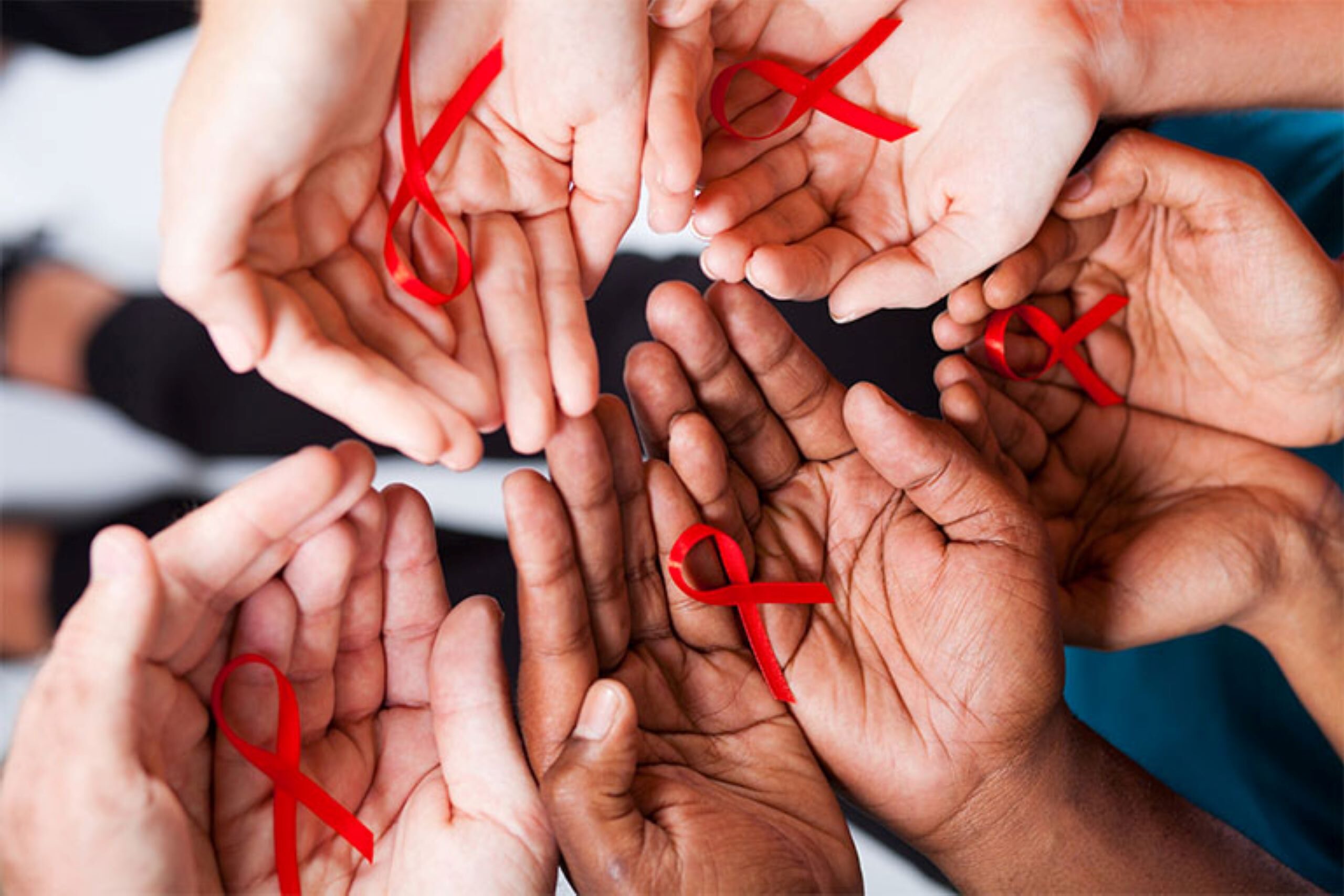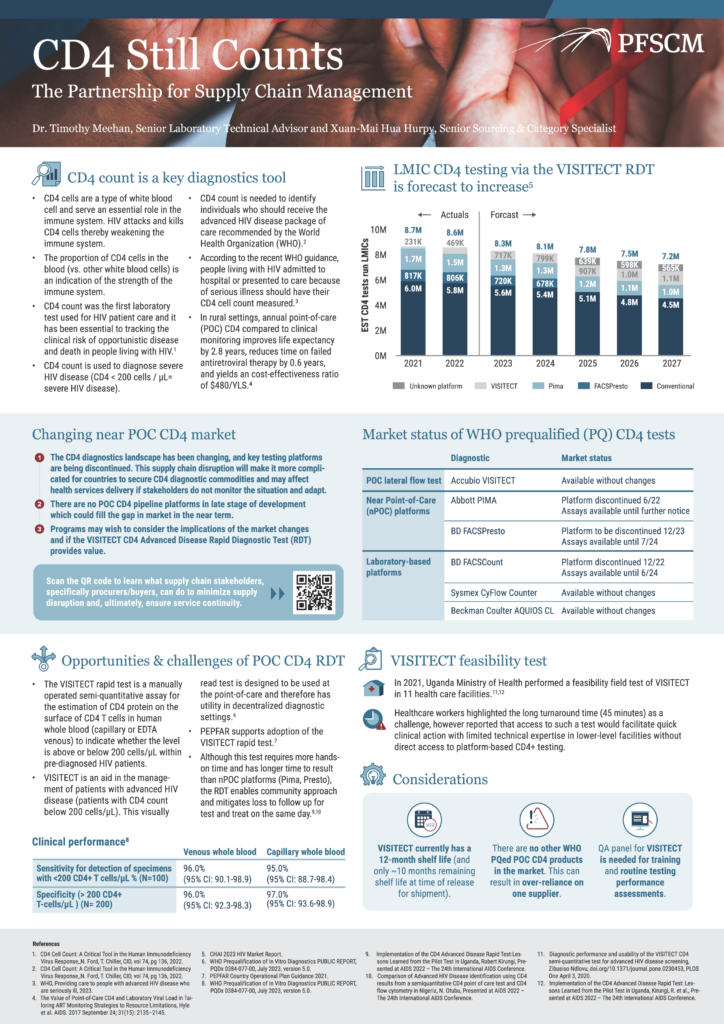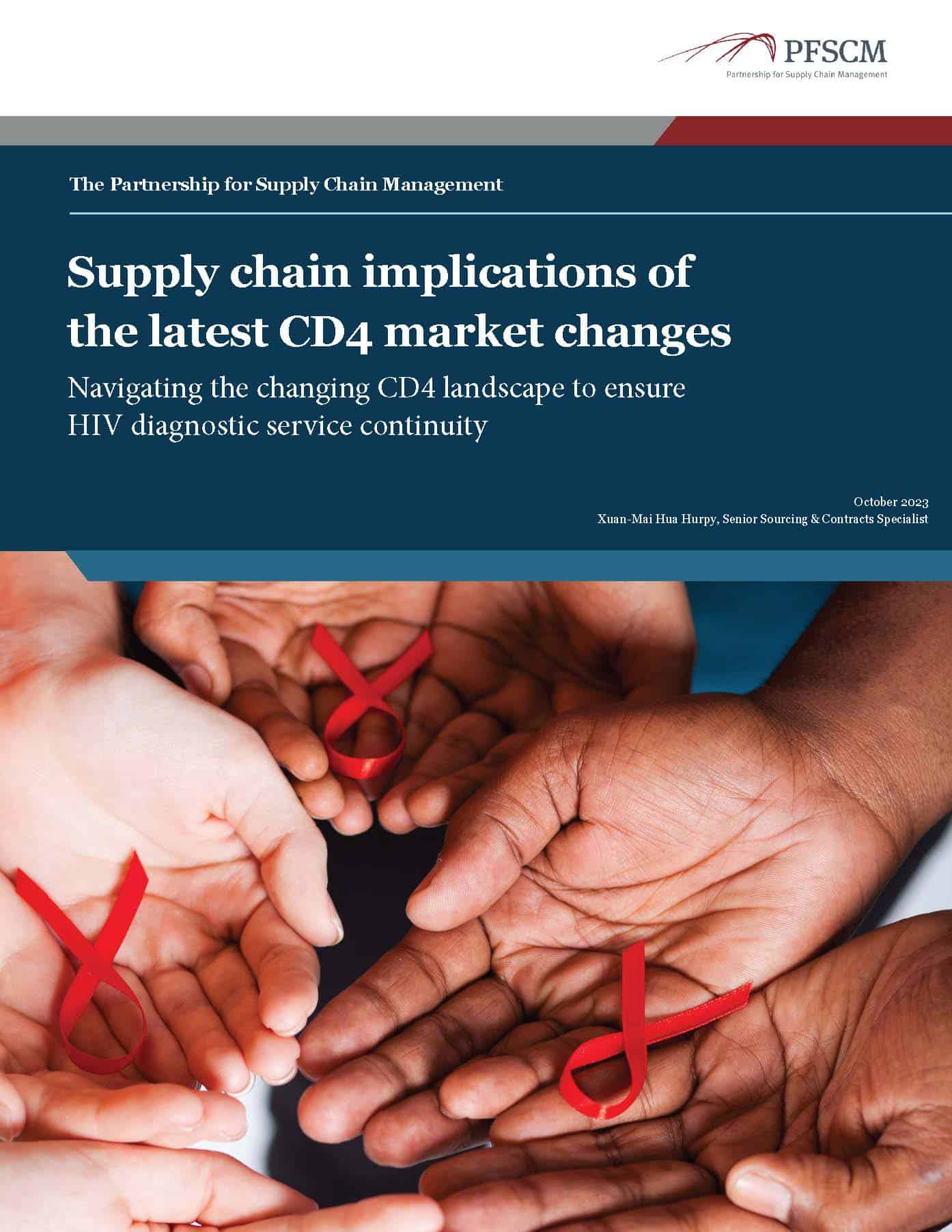By Tim Meehan | March 2024
The CD4 diagnostic landscape has undergone significant changes in recent years, with key testing platforms being discontinued. This has disrupted the supply chain, making it more difficult for countries to secure CD4 stock, and potentially impacting health services delivery. However, with the right strategies in place, stakeholders can mitigate these risks, and ensure service continuity.
At the Partnership for Supply Chain Management (PFSCM), we have been preparing for this supply chain scenario to support our clients with alternative testing products and offer them the best advice for managing risk so that they can continue to serve the millions of people living with HIV and advanced HIV disease (AHD).
CD4 Testing: why it matters
CD4 count is an important indicator of the health of a person’s immune system. It is determined by the proportion of CD4 cells in the blood and is used to track the clinical risk of opportunistic disease and death in people living with HIV. A count of less than 200 cells/μL indicates severe disease, and the current recommendations of the World Health Organization (WHO) state that a CD4 count is needed to identify individuals who should receive the advanced HIV disease package of care.
Market changes and supply chain implications
The CD4 diagnostics landscape has been changing, with key near-point-of-care testing platforms being discontinued. For example, the Abbott Pima was discontinued in 2022, and BD’s FACSPresto platform was discontinued in 2023. However, the availability and WHO prequalified status of Accubio’s VISITECT RDT point-of-care lateral flow test remains unchanged. An awareness of the product availability is therefore essential to prevent disruptions to service delivery.
According to CHAI’s recent HIV Market Report, the proportion of testing using the VISITECT RDT is expected to increase. The VISITECT RDT may herefore, prove valuable in filling the gap created by the loss of the Abbott and BD near point-of-care platforms.
The VISITECT RDT is a manually operated, semi-quantitative test for pre-diagnosed HIV patients to indicate if the CD4 level is below 200 cells/μL. Although it has a longer time to result than near point-of-care platforms such as the Pima and FACSPresto, it has utility in decentralized diagnostic settings that can help mitigate loss to follow-up. The test provides clinically relevant performance from either venous or capillary blood from the finger stick.
Moving forward
To mitigate the risks associated with CD4 market changes, supply chain stakeholders need to stay informed about product availability and consider alternative testing products such as the VISITECT RDT. At PFSCM, we are committed to providing our clients with the best advice and support to ensure service continuity, and the best possible outcomes for people living with HIV and advanced HIV disease. CD4 still counts and we must work together to ensure that everyone has access to the testing they need to stay healthy.
Dr. Timothy Meehan, PFSCM Senior Laboratory Technical Advisor, presents the importance of CD4 count in monitoring the health of individuals living with HIV.



